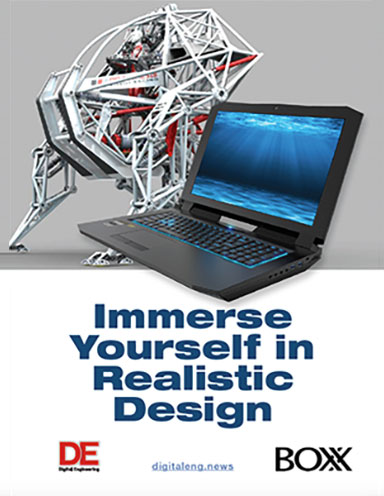Chaos Group Releases V-Ray Next for Rhino
Photoreal renderer tools have expanded the core capabilities of Rhino and Grasshopper, linking photorealistic rendering, scene intelligence and asset management into a workflow, according to Chaos Group.
Latest News
March 18, 2019
Chaos Group introduces V-Ray Next for Rhino, a smart renderer for designers. The renderer's tools have expanded the core capabilities of Rhino and Grasshopper, linking photorealistic rendering, scene intelligence and asset management into a workflow that centralizes the design/visualization experience.
“V-Ray Next for Rhino turns four years of R&D into a mechanism of change, fixing issues that used to cost designers a lot of time and energy,” says Konstantin Gaytandzhiev, product specialist for Rhino at Chaos Group. “As we continue to roll out new features, we’ll continue this journey, making V-Ray Next faster, smarter and more in tune with how people actually want to work.”
V-Ray Scene Intelligence, introduced in V-Ray Next, automatically analyzes a 3D scene at the start of a render to optimize some common decisions a designer may make. For instance, the new Adaptive Dome Light (ADL) now offers more accurate, image-based environment lighting, according to the company.
V-Ray Scene Intelligence has also improved the V-Ray camera, which can now set exposure and white balance automatically. No-input denoising is also available through the new NVIDIA AI denoiser, which eliminates image noise almost instantly.
The new asset management system acts as a new project control center, helping designers streamline workflows and coordinate across projects. Now, designers can manage all of their V-Ray scene assets intuitively, using the live preview function to fine-tune the look of lights, textures and materials from a central location.
V-Ray Next for Rhino launches with a comprehensive Grasshopper toolset. With live interactivity, designers can use V-Ray from within Grasshopper to produce visualizations of abstract curves and repeating patterns. Users can also now animate sunlight, cameras and Grasshopper definitions from the V-Ray timeline. Definitions stay parametric throughout the rendering process, in Grasshopper and Rhino.
Additional features include:
- Enhanced GPU rendering: Designers can now access the full power of GPU rendering in V-Ray, adding support for bucket rendering, volumetric effects such as smoke and fog, and compatibility with VRscans, Chaos Group’s library of physically accurate, scanned materials.
- More accurate Viewport previews: Improved accuracy in the Rhino viewport with enhanced reflections, refractions, bump maps and more.
- Automated Rendering with V-Ray Batch—With access to V-Ray Swarm, it’s now easier to render snapshots and variations of a project, as well as views from multiple Rhino files.
- New Lighting Analysis Tool—Visualize a scene’s real-world illumination values (lux) using the new lighting analysis render element.
- New Scripting Support—Use RhinoScript or Python to automate V-Ray tasks and properties, or accessing V-Ray capabilities not present in the UI.
Pricing and Availability
V-Ray Next for Rhino is available now and is compatible with Rhino 5–6. A full Workstation license is priced at $790, with upgrades available for $395. Annual licenses are available as well for $350 per year.
More Info
Sources: Press materials received from the company and additional information gleaned from the company’s website.
Subscribe to our FREE magazine, FREE email newsletters or both!
Latest News
About the Author
DE’s editors contribute news and new product announcements to Digital Engineering.
Press releases may be sent to them via [email protected].





